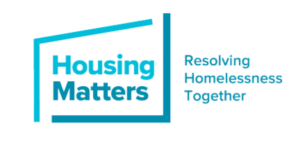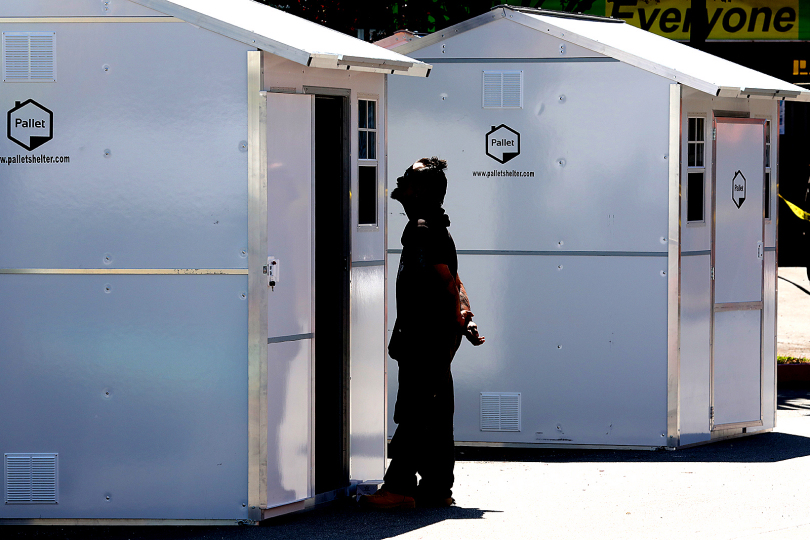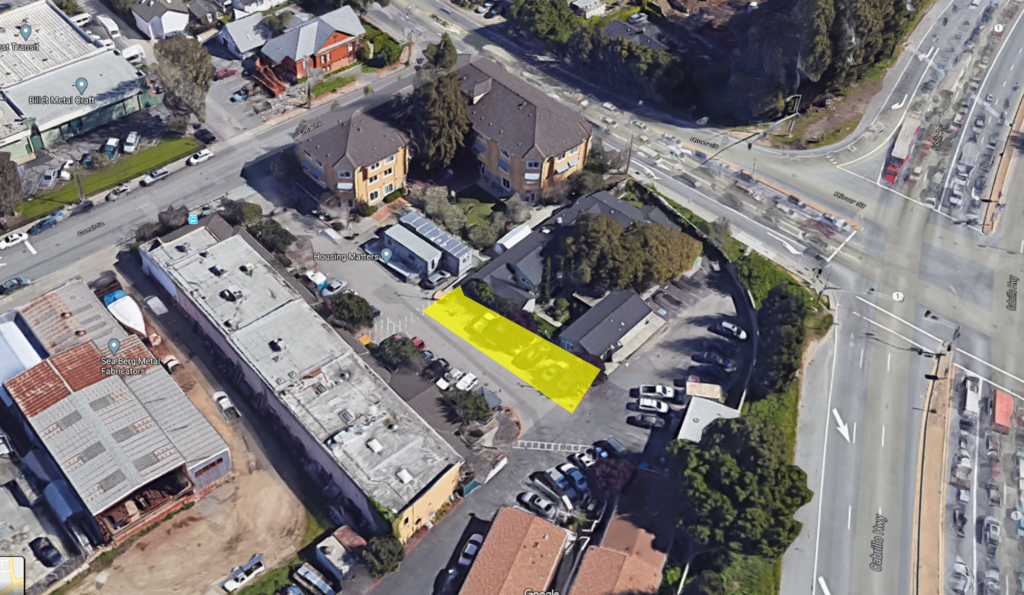Santa Cruz Pallet Shelter
Santa Cruz Pallet Shelter
Emergency Shelter in Santa Cruz
Overview
In April 2020, the first 15 of 30 interim shelter units opened for people experiencing homelessness in the City of Santa Cruz, CA.
Context:
- Action was taken to address the imminent threat to unsheltered population’s health and safety:
- Galvanized by the coronavirus emergency – “We recognized that we weren’t going to be able to achieve social distance in — a bunk bed is basically two feet away from the upper and lower bunk.” (quote)
- City serves as a “regional shelter center” due to lack of shelters in neighboring cities
- As in prior years, more than half of the county’s homeless population — 1,204 people — live in the city of Santa Cruz, followed by the unincorporated county and Watsonville (source)
- The percentage of homeless who report living outdoors in parks, encampments or on the street is also steadily increasing — up from 24% in 2013 to 44% in 2019.
- Martin vs. Boise case – Forces community to build adequate shelter before enforcing anti-camping laws. Case review.
Mission: Quickly provide non-congregate shelter to adjacent congregate shelter people experiencing homelessness in the City of Santa Cruz.
Site
Owner: City-owned land leased to nonprofit on long-term basis
Previous Use: Paved parking lot
Use Arrangement: Ground lease
Site Selection Criteria Considerations: N/A
Funding
| Upfront Development* | $200k | From Santa Cruz County – see notes |
| Cost Per Bed* | $7k | 30 units in total |
| Operating Costs* | $1.2 million | Santa Cruz County for one year of operations – see notesPossible FEMA reimbursement pending |
| Cost Per Bed* | $40k/year |
*approximations
Development
| Lead Deal Coordinator |  |
Housing Matters |
| Community Engagement |  |
City of Santa Cruz |
| Construction Management |  |
Pallet Shelter |
| Shelter Vendor / Manufacturer |  |
Pallet Shelter |
| On-Site Assembly |  |
Pallet Shelter |
Operations
Lead Operator:

| Operator | Housing Matters, a 33-year-old, Santa Cruz-based homeless services nonprofit, runs a campus that has evolved into four emergency and transitional housing shelters for nearly 230 people, a medical clinic, and a 12-bed medical respite care facility. It is Santa Cruz’s largest homeless services provider.housingmatterssc.org/ | |
| Agreement | 1-year contract with City | |
| Staffing |
|
|
| Services Provided | Case Management, Logistics, Operations | |
| Cost |
|
|
| Operating Expenses |
|
Press
Santa Cruz homeless shelter provides COVID-19 spacing with mini-cottages
Homelessness slightly down in Santa Cruz County, but troubling trends highlight housing crisis









 NEXT
NEXT



